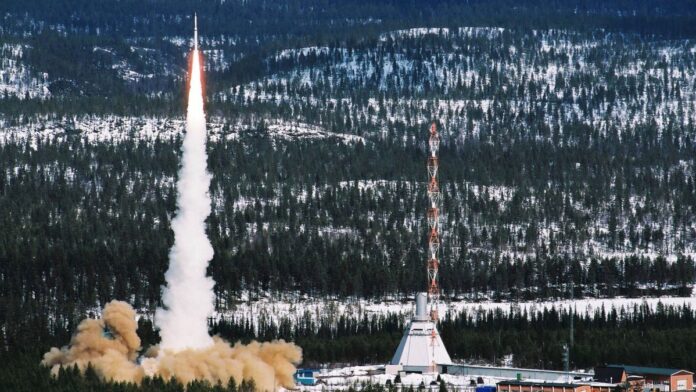Sweden’s Arctic Circle region is getting an orbital boost.
The nearly 60-year-old Esrange sounding rocket range will soon see missions fly into orbit now that it has been unveiled as the first mainland European orbital spaceport. The forthcoming facility will finally let the European Space Agency (ESA) launch rockets on the continent to supplement decades of missions from French Guiana.
“Spaceport Esrange is a critical asset that will strengthen Europe’s launch capability, improve our competitiveness, and continue to guarantee European access to space,” Josef Aschbacher, ESA director-general, said in a tweet (opens in new tab) following the Jan. 13 inauguration.
Related: The European Space Agency wants to be able to launch its own astronauts
Orbital launches will soar from the spaceport as soon as this year, according to spaceport manager Swedish Space Corp. (SSC). The new facility adds to a cluster of European commercial space activity competing for space access across the continent.
Virgin Orbit made its first, albeit unsuccessful, attempt to send satellites to orbit from the United Kingdom’s Spaceport Cornwall on Jan. 9 from a modified 737 aircraft. Meanwhile companies like Skyrora, Orbex, Astra and Isar Aerospace are targeting launches in the coming months or years in European locations such as northern Scotland, Wales, Germany, Portugal, Norway, Spain or the Shetland Islands.
Esrange, based in Kiruna, has its origins during the International Geophysical Year (opens in new tab)(IGY) of 1957-58 that also spurred the Soviet Union and the United States to begin launching space satellites like Sputnik and Explorer 1, according to ESA (opens in new tab).
IGY encouraged nations worldwide to move more firmly away from using sounding rockets for military purposes, according to a November 2006 history report (opens in new tab) by ESA officials. (Rockets were used during the Second World War, particularly by the Germans, with 1940s-era research also conducted at Allied sites such as Wallops Island in Virginia.)
Sweden’s contribution to IGY was the Kiruna Geophysical Observatory that focused on studies of Earth’s atmosphere, including auroras and rare, high altitude noctilucent clouds more commonly seen in northern realms, ESA officials stated.
Related: Where to see the northern lights: 2023 aurora borealis guide
Sweden used Esrange as a bargaining chip to join a predecessor group to ESA, known as the European Space Research Organisation, whose membership was ratified in 1964. The first sounding rockets began launching from Esrange just two years later, in 1966, ESA officials stated.
After nearly six decades of sounding rockets at Esrange, SSC has not yet released which company is expected to provide the first satellite that may launch in late 2023. The orbital launch stole headlines, but that’s only a portion of Esrange’s anticipated space activity this year.
ESA plans to host tests for reusable rockets under its Themis program, led by ArianeGroup, SSC noted, while suborbital launches will still form an important part of Esrange’s legacy.
“Themis reusable space launcher demonstrator will begin tests at Spaceport Esrange in 2023, starting with first-stage tests aiming to achieve vehicle liftoff and recovery – known as ‘hop tests’,” officials said. “The launch facility will also host suborbital test launches of several next-generation rockets.”
Elizabeth Howell is the co-author of “Why Am I Taller (opens in new tab)?” (ECW Press, 2022; with Canadian astronaut Dave Williams), a book about space medicine. Follow her on Twitter @howellspace (opens in new tab). Follow us on Twitter @Spacedotcom (opens in new tab) or Facebook (opens in new tab).

